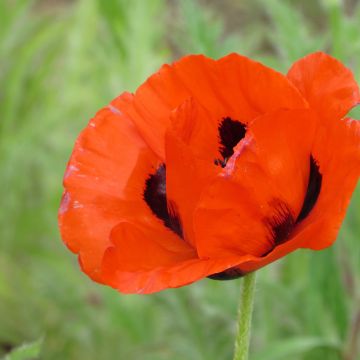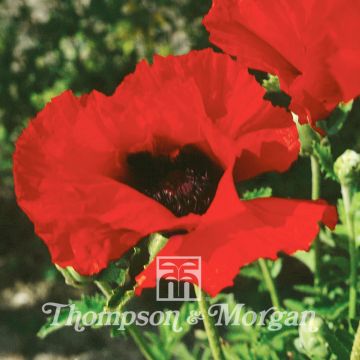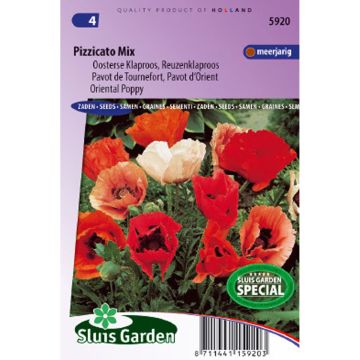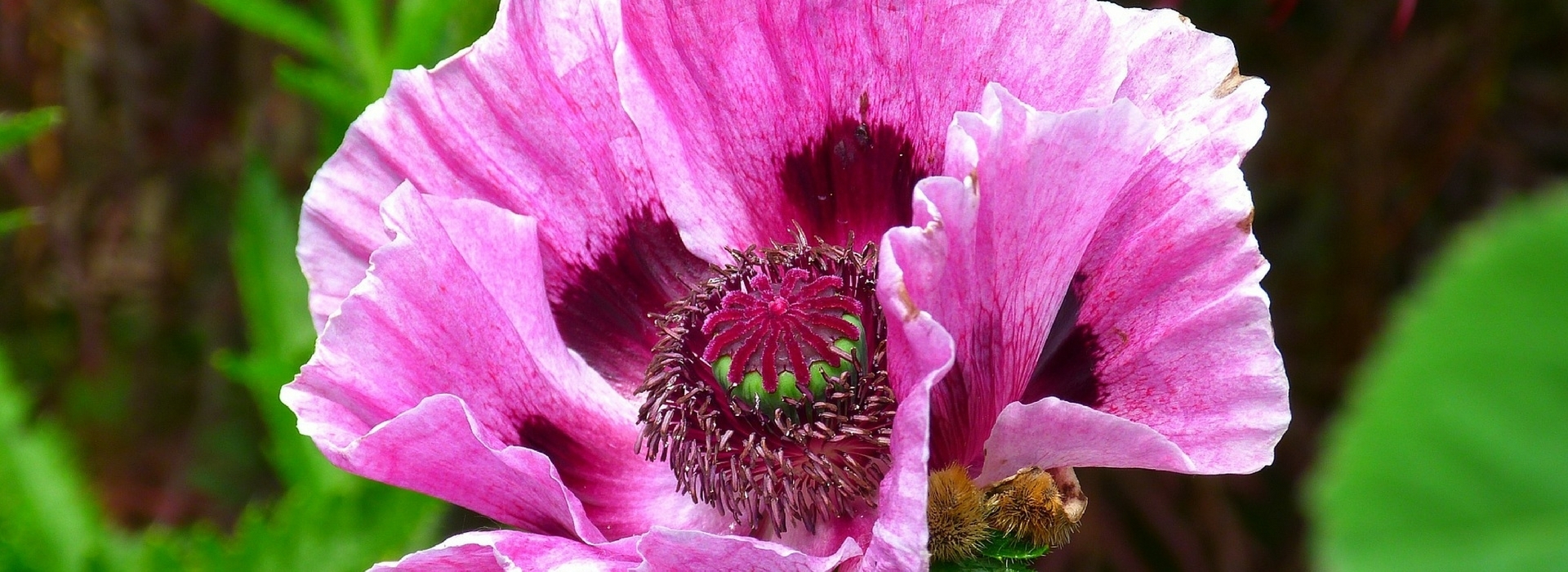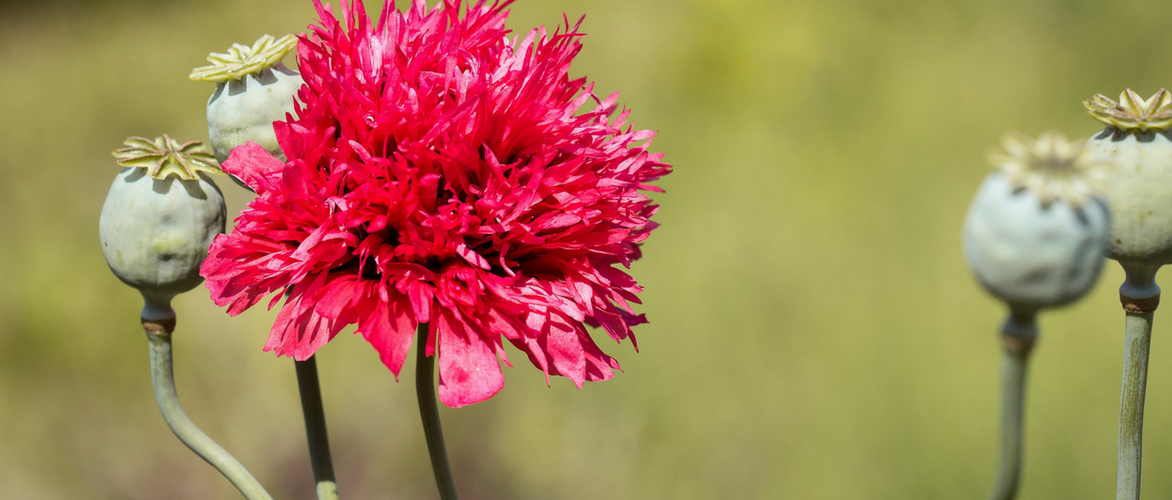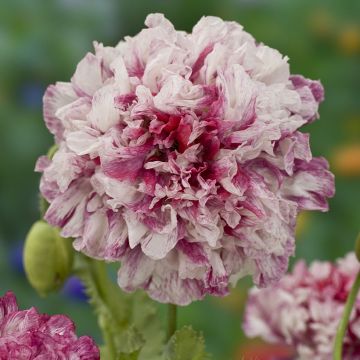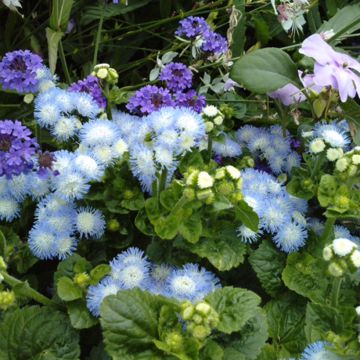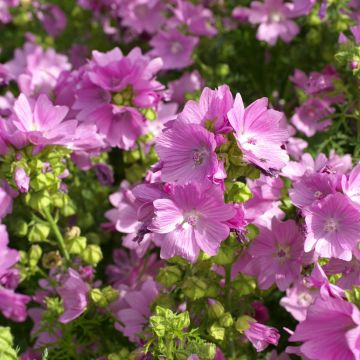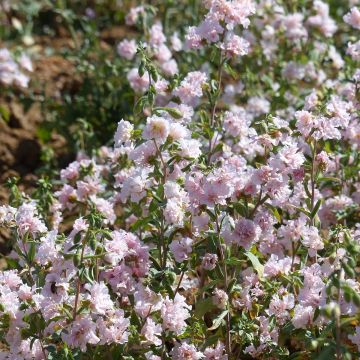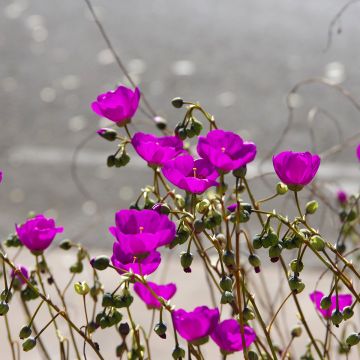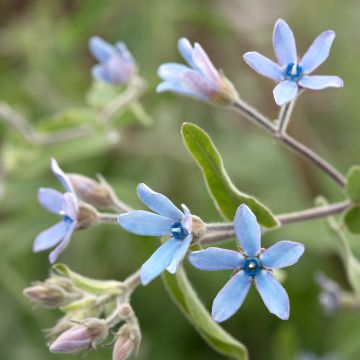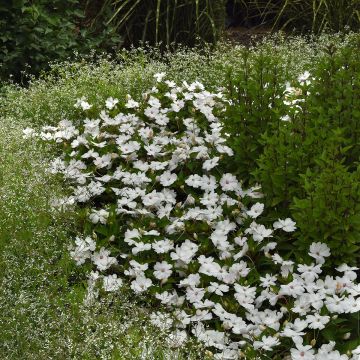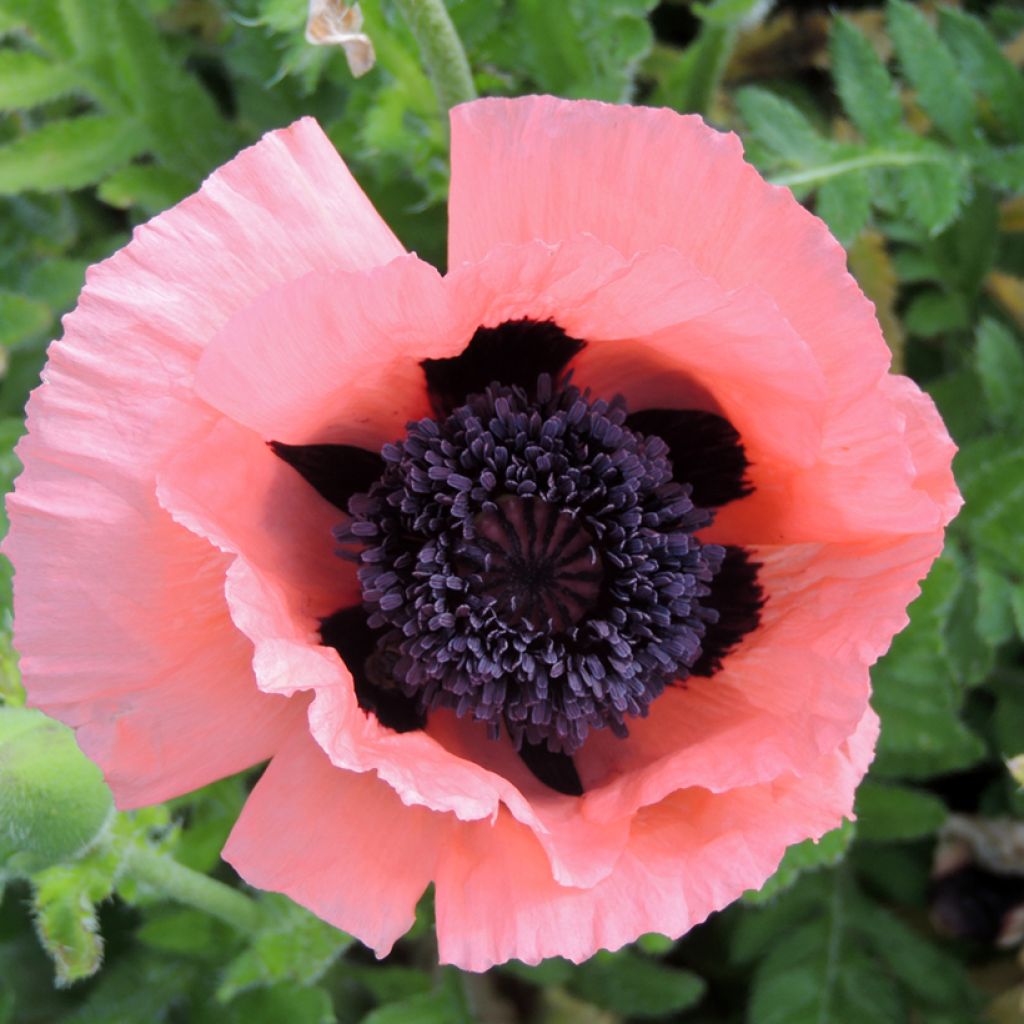

Papaver orientale Princess Victoria Louise - seeds
Papaver orientale Princess Victoria Louise - seeds
Papaver orientale Prinzessin Viktoria Luise (Princesse Victoria Louise)
Oriental Poppy, Turkish Poppy
Special offer!
Receive a €20 voucher for any order over €90 (excluding delivery costs, credit notes, and plastic-free options)!
1- Add your favorite plants to your cart.
2- Once you have reached €90, confirm your order (you can even choose the delivery date!).
3- As soon as your order is shipped, you will receive an email containing your voucher code, valid for 3 months (90 days).
Your voucher is unique and can only be used once, for any order with a minimum value of €20, excluding delivery costs.
Can be combined with other current offers, non-divisible and non-refundable.
Why not try an alternative variety in stock?
View all →This plant carries a 6 months recovery warranty
More information
We guarantee the quality of our plants for a full growing cycle, and will replace at our expense any plant that fails to recover under normal climatic and planting conditions.
Would this plant suit my garden?
Set up your Plantfit profile →
Description
Oriental Poppy 'Prinzessin Viktoria Luise', more commonly known as 'Princess Victoria Louise', is a magnificent perennial that can also be grown from seeds. It is a spectacular Oriental poppy that produces very large pastel flowers, woven with silky salmon pink and adorned with beautiful dark spots. They bloom in June-July, at the top of tall stems, dominating lush and somewhat dishevelled foliage that stands out in flower beds. A regular in cottage gardens, the Oriental poppy is a hardy and very easy to grow perennial in all deep soils, in the sun.
Papaver orientale is a herbaceous perennial of the Papaveraceae family, native to Asia. 'Princess Victoria Louise' is a superb cultivar derived from this species. The plant has sturdy floral stems 80 to 90 cm tall. It forms a bushy clump reaching 40-50 cm in height (for the foliage) and 50-60 cm in width. Flowering begins in June, and continues into July, usually halted by heat and drought. Each floral stem carries a single pendulous bud that turns upwards. The petals, crumpled in the bud, unfold at anthesis like butterfly wings, giving rise to a very large flower, 15 to 20 cm in diameter, with 4 thick and crimped petals arranged in two rows forming a cup. Their colour is a soft and bright salmon pink, with blackish-purple spots at the base. The centre of the flower is occupied by numerous stamens of a very dark violet with bluish reflections. The flower remains open for a few hours before dropping its petals. Well-established plants produce several floral stems, ensuring the renewal of flowers for about 3 weeks. After flowering, the foliage tends to disappear, leaving a small basal rosette in autumn, which is indicative of an adaptation to high temperatures and summer drought. The wind disperses the seeds by shaking the fruit. This plant has large rough, deeply cut and hairy, dark green leaves. The fleshy and deep roots of this Oriental poppy do not tolerate transplantation well, especially in mature plants. In dry climates, the plant completely disappears from the surface of the soil in summer.
Oriental poppies, with their giant poppy-like flowers, are equally as at home in sophisticated flower beds as they are in cottage gardens or rustic compositions. Pair them with shrubby wormwoods 'Powis Castle', daisies or Leucanthemums, tall thistles, chamomiles, lavenders, summer asters, and nepetas with their simple blooms. They also beautifully accompany pastel roses and autumn stonecrops whose foliage develops during the summer, Damask daisies and cosmos for a summery atmosphere in soft colours. In all cases, accompany them with perennials, as they will fill the space left empty after flowering. The decorative seed heads of poppies can be used in dried flower arrangements. Bouquets can also be made with flowers picked in bud.
Flowering
Foliage
Plant habit
Botanical data
Papaver
orientale
Prinzessin Viktoria Luise (Princesse Victoria Louise)
Papaveraceae
Oriental Poppy, Turkish Poppy
Papaver orientale Princess Victoria Louise
Cultivar or hybrid
Other Oriental Poppy seeds
View all →Planting and care
Sow the Oriental Poppy Princess Victoria Louise from February to May on the surface of a light and moist compost at a temperature of around 15°C. Do not cover the seeds. Place in a propagator or a plastic bag until germination, which usually takes 10 to 21 days. Keep the seedlings in a well-lit area, as this facilitates germination.
Transplant the young poppies when they are large enough to handle, into 8 cm pots or deep trays. The pots and trays will be kept cool. When the plants are well established, gradually acclimatise them to the outdoors for 7 to 10 days before planting them in the garden. Plant the poppies 30-40 cm apart, in a sunny position, in fertile and well-drained soil. Later sowings can overwinter under a cold frame and be planted in the garden the following spring.
You can also sow directly outdoors. Rake the soil carefully and sow the fine seeds just below the surface. Water regularly, especially during dry periods. When the young poppy plants are large enough to handle, plant them with a spacing of 30-40 cm between each plant.
The Oriental Poppy is a very hardy plant, able to tolerate temperatures as low as -20°C. Like most poppies, it is easy to grow. It will thrive in any soil, even limestone, as long as it is well-drained and deep. This plant dislikes heavy waterlogged soils in winter. The soil should also be deep enough for its long fleshy taproot to develop properly. It should be planted in full sun.
Sowing period
Intended location
Planting & care advice
This item has not been reviewed yet - be the first to leave a review about it.
Similar products
Haven't found what you were looking for?
Hardiness is the lowest winter temperature a plant can endure without suffering serious damage or even dying. However, hardiness is affected by location (a sheltered area, such as a patio), protection (winter cover) and soil type (hardiness is improved by well-drained soil).

Photo Sharing Terms & Conditions
In order to encourage gardeners to interact and share their experiences, Promesse de fleurs offers various media enabling content to be uploaded onto its Site - in particular via the ‘Photo sharing’ module.
The User agrees to refrain from:
- Posting any content that is illegal, prejudicial, insulting, racist, inciteful to hatred, revisionist, contrary to public decency, that infringes on privacy or on the privacy rights of third parties, in particular the publicity rights of persons and goods, intellectual property rights, or the right to privacy.
- Submitting content on behalf of a third party;
- Impersonate the identity of a third party and/or publish any personal information about a third party;
In general, the User undertakes to refrain from any unethical behaviour.
All Content (in particular text, comments, files, images, photos, videos, creative works, etc.), which may be subject to property or intellectual property rights, image or other private rights, shall remain the property of the User, subject to the limited rights granted by the terms of the licence granted by Promesse de fleurs as stated below. Users are at liberty to publish or not to publish such Content on the Site, notably via the ‘Photo Sharing’ facility, and accept that this Content shall be made public and freely accessible, notably on the Internet.
Users further acknowledge, undertake to have ,and guarantee that they hold all necessary rights and permissions to publish such material on the Site, in particular with regard to the legislation in force pertaining to any privacy, property, intellectual property, image, or contractual rights, or rights of any other nature. By publishing such Content on the Site, Users acknowledge accepting full liability as publishers of the Content within the meaning of the law, and grant Promesse de fleurs, free of charge, an inclusive, worldwide licence for the said Content for the entire duration of its publication, including all reproduction, representation, up/downloading, displaying, performing, transmission, and storage rights.
Users also grant permission for their name to be linked to the Content and accept that this link may not always be made available.
By engaging in posting material, Users consent to their Content becoming automatically accessible on the Internet, in particular on other sites and/or blogs and/or web pages of the Promesse de fleurs site, including in particular social pages and the Promesse de fleurs catalogue.
Users may secure the removal of entrusted content free of charge by issuing a simple request via our contact form.
The flowering period indicated on our website applies to countries and regions located in USDA zone 8 (France, the United Kingdom, Ireland, the Netherlands, etc.)
It will vary according to where you live:
- In zones 9 to 10 (Italy, Spain, Greece, etc.), flowering will occur about 2 to 4 weeks earlier.
- In zones 6 to 7 (Germany, Poland, Slovenia, and lower mountainous regions), flowering will be delayed by 2 to 3 weeks.
- In zone 5 (Central Europe, Scandinavia), blooming will be delayed by 3 to 5 weeks.
In temperate climates, pruning of spring-flowering shrubs (forsythia, spireas, etc.) should be done just after flowering.
Pruning of summer-flowering shrubs (Indian Lilac, Perovskia, etc.) can be done in winter or spring.
In cold regions as well as with frost-sensitive plants, avoid pruning too early when severe frosts may still occur.
The planting period indicated on our website applies to countries and regions located in USDA zone 8 (France, United Kingdom, Ireland, Netherlands).
It will vary according to where you live:
- In Mediterranean zones (Marseille, Madrid, Milan, etc.), autumn and winter are the best planting periods.
- In continental zones (Strasbourg, Munich, Vienna, etc.), delay planting by 2 to 3 weeks in spring and bring it forward by 2 to 4 weeks in autumn.
- In mountainous regions (the Alps, Pyrenees, Carpathians, etc.), it is best to plant in late spring (May-June) or late summer (August-September).
The harvesting period indicated on our website applies to countries and regions in USDA zone 8 (France, England, Ireland, the Netherlands).
In colder areas (Scandinavia, Poland, Austria...) fruit and vegetable harvests are likely to be delayed by 3-4 weeks.
In warmer areas (Italy, Spain, Greece, etc.), harvesting will probably take place earlier, depending on weather conditions.
The sowing periods indicated on our website apply to countries and regions within USDA Zone 8 (France, UK, Ireland, Netherlands).
In colder areas (Scandinavia, Poland, Austria...), delay any outdoor sowing by 3-4 weeks, or sow under glass.
In warmer climes (Italy, Spain, Greece, etc.), bring outdoor sowing forward by a few weeks.






























